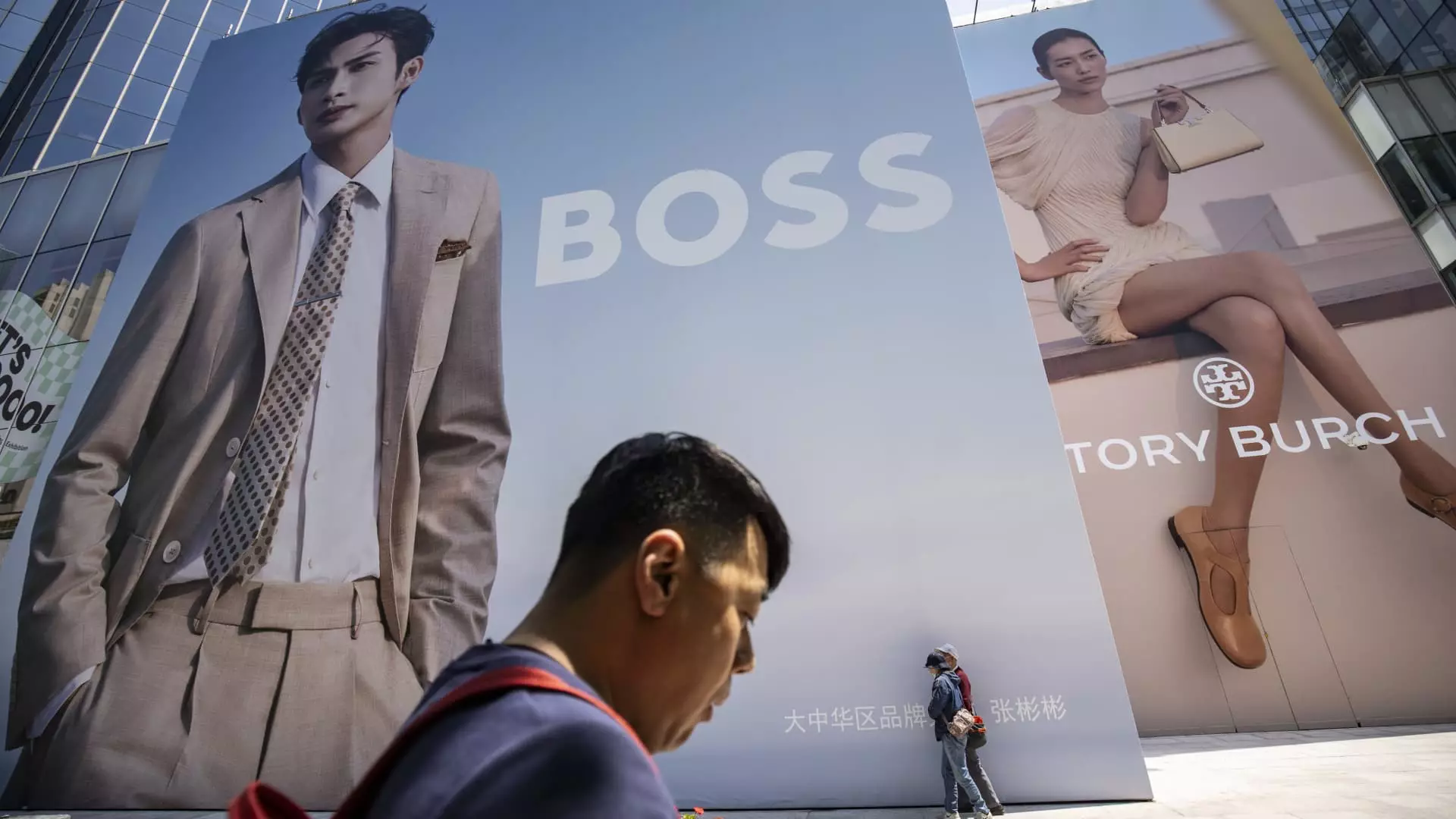Recent developments in the European luxury market point toward a significant downturn, primarily attributed to shifting demand patterns among affluent consumers, especially within China. Analysts have signaled a troubling trend, as several luxury brands, previously buoyed by post-COVID consumption patterns, are now grappling with a grim economic perspective. The downgrading of stocks, such as Hugo Boss and Burberry, underscores a broader issue that could reshape the luxury landscape moving forward.
The crux of the matter lies in the changing behavior of luxury consumers. Following an unprecedented peak in 2022, when deluge spending had reached unprecedented levels, analysts now suggest a decline in revenues across the luxury sector. The sharp drop in demand has been most acutely felt among high-end Chinese consumers, who have, until recently, played a pivotal role in driving sales in this market. According to Bank of America Securities, this decline reflects a broader normalization phase that has affected American and Asian consumers previously engaged in exorbitant luxury spending. The report insinuates that these affluent consumers are now “all shopped out,” struggling to sustain past expenditure levels.
China’s economic landscape, particularly its troubled property sector, has emerged as a decisive factor influencing the luxury market. With China’s once formidable presence in luxury consumption now faltering, the implications for European brands are far-reaching. This not only heightens uncertainty within the luxury goods market but amplifies the vulnerabilities brought about by geopolitical tensions and macroeconomic challenges, as evidenced by the considerable drops in stock prices for big-name companies like Hugo Boss, Burberry, LVMH, and Kering.
Jon Cox, head of European consumer equities at Kepler Cheuvreux, elaborated on these constraints, pointing out that the luxury sector is entering a potential period of prolonged weakness, compounded by the volatility of emerging demand from aspirational buyers. Luxury brands like Burberry, which are in the midst of repositioning efforts, face an uphill battle. The fickle spending habits of younger, fashion-forward consumers pose a unique challenge in an industry reliant on not just buyers with financial capacity but also those with a resilient desire for brand loyalty.
In response to the altering market dynamics, it is evident that brands are inclined toward increased discounting to salvage sales as inventories swell. However, this raises concerns about brand dilution, as ongoing discount strategies can tarnish exclusivity—a cornerstone of luxury branding. The interconnectedness of global markets exacerbates this issue, as potential tariffs or sanctions stemming from political disputes could dampen the attractiveness of luxury goods to Chinese consumers, understanding them more as luxury commodities than necessities.
Additionally, market analysts suggest that if the trends continue downward, companies traditionally viewed as strong performers may also succumb to broader pressures. Luxury brands like Hermès and Richemont, while currently positioned favorably, may find themselves vulnerable if their consumer base similarly transitions to a more critical spending outlook.
Looking ahead, luxury firms must navigate a shifting landscape judiciously. Patience and strategic agility will be key. As brands like Kering and Burberry attempt to revitalize their market presence, the focus may need to shift toward innovation, rebranding, and enhanced customer relationships to build long-term loyalty. The potential response from the market signifies the urgency to create unique offerings that can recapture the luxury buyer’s imagination.
Furthermore, luxury firms ought to proactively engage with consumer insights to understand and anticipate shifting preferences. By fostering a stronger connection with consumers and embracing heightened transparency and sustainability initiatives, brands could fortify their market positions against the crumbling luxury sector dynamics.
The challenges facing the European luxury market today are significant and multifaceted. As luxury brands navigate this precarious terrain shaped by economic angst and shifting consumer habits, preserving brand integrity while adapting to current realities is paramount. France’s luxury titans and British fashion houses are at a crossroads, compelled to rethink their strategies amidst a landscape that is rapidly transforming. As the luxury sector grapples with waning demand, only those brands that pivot effectively will be able to emerge from this storm stronger than before.


Leave a Reply